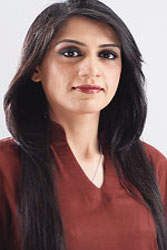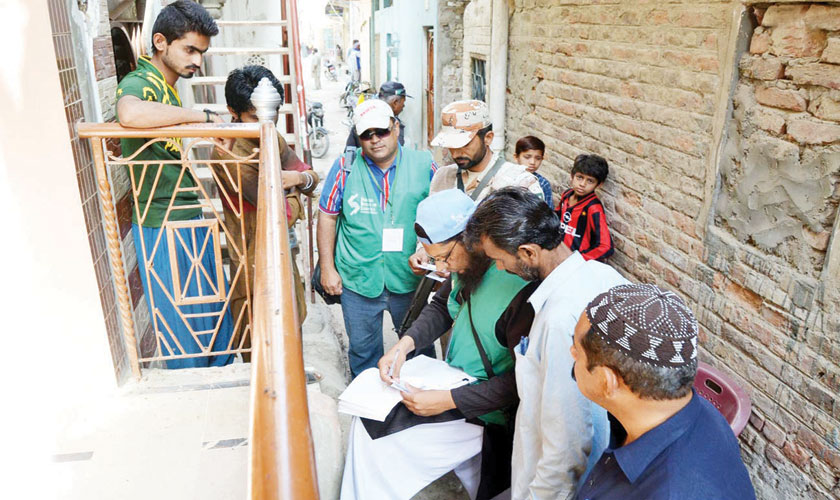POLICY
 The country has finally begun a population census after a gap of 19 years. An entire generation in the country is unknown to one of the important exercises that a country undertakes.
The country has finally begun a population census after a gap of 19 years. An entire generation in the country is unknown to one of the important exercises that a country undertakes.
One could hope that we as a nation will now be able to know exactly “how many are we?” and also would be able to have policies based on numbers that are no more an approximation. However, so far, this exercise is far from producing the desired results.
The sixth Population Census in Pakistan began this year on March 15th. The order was given by the Supreme Court of Pakistan. Like the local government elections, which too had been conducted on the order of the apex court, population census did not stand any chance, as the previous governments too had failed to conduct the exercise on the pretext of security concerns.
Field enumerators along with security personnel are seen door to door counting heads and houses. Army has provided some 200,000 of its strength to help conduct the exercise, which the chief of army staff has termed as a national duty. There are also 119,000 field enumerators, who have been chosen from various departments of the government, including the education department.
From the beginning of this exercise, the political parties especially in Sindh had reservations on the methodology. Generally speaking, the census is important to the political parties only for three reasons. Those reasons are, revenue share of the provinces (NFC Award), which is calculated on population strength; the delimitation of constituencies; and the number of seats in the Provincial and National Assembly, which too will depend on the population upsurge.
Muttahida Quami Movement-Pakistan (MQM-P) and Pakistan Peoples’ Party (PPP) have taken to the court, as they allege that the federal government, responsible for conducting the census in the country, has taken every step to reach results that will reveal a lesser growth of heads than reality.
Dr Farooq Sattar of MQM-P, states that housing blocks in Karachi should have increased more as compared to cities like Ghotki and Tharparkar, since a large number of people from all across the provinces have migrated to Karachi in the past 19 years. One could understand that their concern is to have more seats in the provincial and National Assembly from the city that has most of their vote bank.
On the other hand, PPP in Sindh is more concerned with the final numbers. They want more revenue share for the province in the NFC. Time and again their various representatives have warned of not accepting the census, if it fails to mimic the result they anticipate.
Dr Abdul Qayyum Somro of PPP has stated that the population in Sindh has increased more than any other province, especially interior Sindh.
Field staff
Census for any country is important. Data collected helps formulate progressive policies. However, this census, which is being conducted at a cost of Rs18.5 billion, will fail to give detailed indicators. Confusions amongst enumerators are many. Being trained for just four days to conduct the exercise, many have been forced into the job.
“I am a teacher, and my job is to educate, not go door to door in this heat,” said an enumerator on condition of anonymity.
Female teachers of higher secondary schools were found collecting data in Lines Area, Karachi. Each field enumerator is accompanied by one army personnel, a ranger and a police cop. Keeping in view the cultural aspect, mostly women have been hired to do the job, although PPP complains of fewer female field staff.
The collection of data seems easier in areas marking low economic strata. People living in slums or semi-pakka houses are cooperative and feel the data will get them some sort of rights. These people often help the field enumerators and the security staff to guide their way through the mohallas.
“I have never been to this area nor have these security people. They belong to another province and hence it is difficult to do the housing census,” said a female enumerator.
Carrying forms that are spiral bound in the form of a book, the field enumerators jot down basic data of every household. Questions include name, gender, religion, place of birth, language, education level, and nature of job, and the number of rooms in the house.
Collecting data from those who dwell in huge houses and are of upper middle class or upper class seems to be a tough task. Mostly, these enumerators are sent information through the chawkidaar (guard), a maid, cook or a driver. The sahib or begum sahiba may not be interested in stepping out in the heat. Here, even the uniformed men are unable to attract them.
“I have been standing here for the last fifteen minutes, the guard has brought the National Identity Card,” said an enumerator collecting data in Faran society of Karachi on the first day of the census.
Meanwhile, extracting human resources from public schools will have an impact too.
“19 teachers have been given the task from my school leaving out the rest. But the school is closed, as it has been transformed to station these security people,” revealed an enumerator.
The four day training outcome can be seen in one of the apartment blocks of Dhoraji society. The enumerator has made mistakes in writing the count for each apartment, and hence one can see the green marking cancelled twice outside each apartment.
Another area where field enumerators have differing answers is how and where the domestic workers should be counted. In big cities, people from rural areas may secure a 24 hour job in bungalows, where they are also provided shelter. Some enumerators stated that they should be counted in their own village, whereas others were counting them in the city and the house they were working at. But how and where would they jot this data?
The form that is being used has the question of relationship with the head of the family with various options. The option has no provision for domestic worker (cook, maid, guard, driver, etc).
Family members living outside Pakistan for more than six months should be counted as overseas Pakistanis, but no details of their age, sex or marital status will be taken. So how many Pakistanis are living abroad would be a difficult question to answer through Census 2017.
Data collection
Before the census exercise began, many raised questions upon knowing that they had no provision of being included. These included the transgender, disabled, and Sikhs.
The apex court then directed the Pakistan Bureau of Statistics (PBS), the federal authority responsible for the task to include transgender. However, the form that is being used in Census 2017 has no such category.
Habibullah Khattak, official of PBS said, “53 million forms were printed in 2007, and therefore we have asked the enumerators to write codes that we have designated for transgender. But data for the disabled or Sikh community cannot be collected this time.”
The forms have provisions for languages, and the enumerators can ask a person whether they speak Urdu, Pashto, Punjabi, Balochi, Hindko, Kashmiri, etc, but there is no provision for languages spoken in Gilgit-Baltistan, though it is a constitutional province.

Using forms that were printed in 2007 shows the half-hearted effort to conduct the 6th census in the country. Spending funds and human resources and still being unable to include important data depicts the attitude towards data collection and its importance.
The census which is underway has been divided into two phases. The first round of the first phase had initial two days for the house count and remaining for the headcount; last day of the first round was for the homeless population. The second round will begin on April 13; whereas the second phase will be through April 24 to May 25, 2017.
The Sindh High Court has now designated codes for various religions like Sikh, Budhism, Zoroastrians, and others to be included in the census. But how will those codes be added or used? The first round is over, the second is underway, and the information needs to trickle down to field staff. The form has no space to include all those who went to the court. The court has directed the PBS to make all the inclusions; however, the big question is the technical aspect of data tabulation.
The manual data collected by enumerators will be transformed into machine readable format and transferred to computers using the Optical Character Recognition (OCR) technology.
In almost two decades, the ways census data is collected has changed globally. However, we are still using manual method of data, which according to the PBS is due to the low literacy level prevalent in the country that bars any self electronic form tabulation.
So will the OCR read all the codes? A PBS official on condition of anonymity feels that all the codes will create issue in transformation.
If the court had directed to conduct the Census in March, why did the authority not prepare for all this? If 2007 printed forms were to be used which subtracted religion, languages and various communities from the census, it should have been made known prior to the exercise.
Now that the court has directed PBS to include the transgender and the rest through codes, it will result in confusion. Moreover, those that have been already counted will not be re-counted.
Once the exercise is over, and the collected data has been analysed, it will be shared in the council of common interest (CCI). But this census too would fail to provide the necessary detailed information, which could have been collected, had the Pakistan Bureau of Statistics and the government of Pakistan considered the seriousness of this data, instead of just undertaking an exercise to fulfil the apex courts order.
Form 2A which gathers useful information has not been part of the census. This will be used sometime later as a sample survey questionnaire. If human resource and financial resource of this strength was being utilised, this form should have been part of the ongoing census.
It seems for now that the guess work would continue on many aspects until those sitting in power understand the importance of census and its usage for policy formulation and economic indicators. We may know how many are we, but we may not know who are we all!
The writer is a broadcast journalist